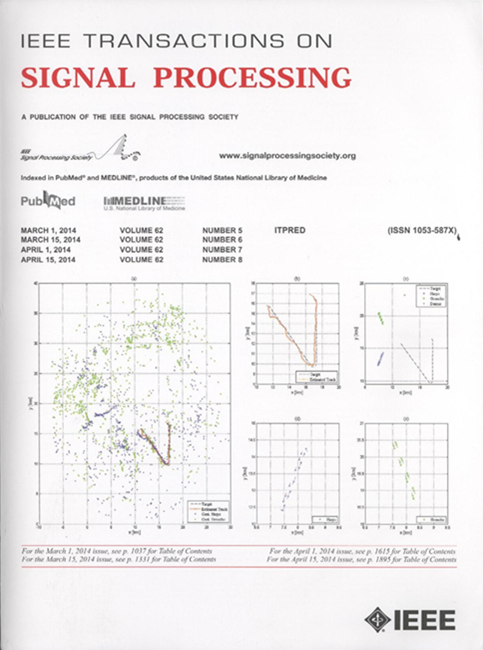Optimal Symbol-Length Filter Design for Sidelobe Suppression in Filter Bank Based Orthogonal Time Frequency Space (FB-OTFS) Systems
IF 5.8
2区 工程技术
Q1 ENGINEERING, ELECTRICAL & ELECTRONIC
引用次数: 0
Abstract
In this paper, we propose symbol-length transceive filter optimization methods for sidelobe suppression in filter bank based orthogonal time frequency space (FB-OTFS) systems. Specifically, we firstly establish the FB-OTFS system model with fast implementation for transceive filters. Then, we analyze the impact of the transceive filters on the orthogonal transmission and derive the constraints for symbol-length transceive filters to achieve the orthogonal transmission. Moreover, the complexity analysis is provided. With the derived orthogonal conditions as constraints, we formulate a transceive filter optimization problem to minimize the stopband energy (a commonly used sidelobe suppression criterion), and derive the theoretically optimal solutions. To further achieve flexible suppression of the spectral sidelobes within specific frequency intervals, we formulate a transceive filter optimization to minimize the weighted stopband energy by designing adjustable frequency domain weights, and also obtain the optimal solutions. Numerical results demonstrate that: 1) The proposed transceive filters have the lowest spectral sidelobes compared with the commonly used rectangular pulse and the Gaussian filter; 2) The sidelobe suppression effects within specific frequency intervals are successfully controlled by designing the frequency domain weights; 3) All proposed transceive filters are verified to satisfy the orthogonal conditions.基于正交时频空间滤波器组(FB-OTFS)系统旁瓣抑制的最佳符号长度滤波器设计
本文提出了基于正交时频空间(FB-OTFS)滤波器组的副瓣抑制的符号长度收发滤波器优化方法。具体而言,我们首先建立了快速实现的收发滤波器FB-OTFS系统模型。然后,我们分析了收发滤波器对正交传输的影响,并推导了实现正交传输的符号长度收发滤波器的约束条件。并对其进行了复杂性分析。以导出的正交条件为约束,提出了一个以最小阻带能量(一种常用的旁瓣抑制准则)为目标的收发滤波器优化问题,并推导出理论最优解。为了进一步实现对频谱旁瓣在特定频率间隔内的灵活抑制,我们通过设计可调频域权值,制定了一种使加权阻带能量最小的收发滤波器优化方案,并得到了最优解。数值结果表明:1)与常用的矩形脉冲滤波器和高斯滤波器相比,所提滤波器具有最低的谱旁瓣;2)通过设计频域权值,成功控制了特定频率区间内的旁瓣抑制效果;3)验证了所提滤波器满足正交条件。
本文章由计算机程序翻译,如有差异,请以英文原文为准。
求助全文
约1分钟内获得全文
求助全文
来源期刊

IEEE Transactions on Signal Processing
工程技术-工程:电子与电气
CiteScore
11.20
自引率
9.30%
发文量
310
审稿时长
3.0 months
期刊介绍:
The IEEE Transactions on Signal Processing covers novel theory, algorithms, performance analyses and applications of techniques for the processing, understanding, learning, retrieval, mining, and extraction of information from signals. The term “signal” includes, among others, audio, video, speech, image, communication, geophysical, sonar, radar, medical and musical signals. Examples of topics of interest include, but are not limited to, information processing and the theory and application of filtering, coding, transmitting, estimating, detecting, analyzing, recognizing, synthesizing, recording, and reproducing signals.
 求助内容:
求助内容: 应助结果提醒方式:
应助结果提醒方式:


